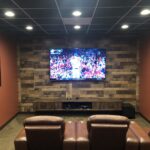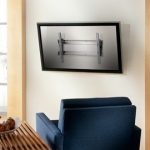If you live for killer sound quality and have subsequently invested lots of money and time into perfecting your audio system but still find it falling flat, it might be time to consider a sound bar. If this is the first time your hearing about this device, it probably won’t be the last. More and more frequently, audio junkies are choosing to install a sound bar to enhance their system. So how does the sound bar assist in improving sound? Thinner TV enclosures make it hard to wire in the proper audio equipment, a sound bar eliminates the need for a plethora of cluttered speakers with a single sleek panel that looks good and sounds even better. They are definitely worth your consideration if you are looking for something like an effortless bedroom system or anything other than a big entertainment setup.
Sound bars are both simple to use and easy to install, some will even allow you to do without a surround receiver but there are a few disadvantages worth examining. If you like your bass down low, this might not be the right unit for you, a sound bar makes it hard to get a very decent bass even with a supplementing bass speaker. Also, the physical size of the speaker reduces sound soundstage width. For those seeking surround channels, the sound bar narrowly supports them or might not at all. Let’s face it, connectivity is a drag but nonetheless important to remember. The sound bar can connect using three different types of components: though the bar itself, the TV or through a receiver. It is vital that you choose which type of connection you prefer before purchasing a sound bar. The sound input can be drastically limited depending on which connection you choose. The phase Tech bar is the best way to reap full benefits of your receiver features, surround channels and efficient subwoofer.
The number of channels is another key element to using a sound bar. Soundbars can have as many as two, three, five or seven channels and may or may not include a sub. The more channels you have, the more likely your sound will translate with an unwanted artificial quality. Most bars will fall between a 5.1-channel or a 2.1-channel mode. If you are looking for a higher functioning system with more features and greater complexity, a 5.1+ upgrade will need to be made from a soundbar to a compact satellite or subwoofer with a surround receiver. To delve a little further on connectivity, there is both legacy and HDMI connections. Some soundbars use a variety of stereo analog or digital inputs, but others rely solely on HDMI connections. Keep in mind that using the HDMI route delivers highest quality lossless surround formats; but this doesn’t necessarily guarantee higher performance.
Looking for a wireless option? A few soundbars will give you a wireless routing to their subwoofers. Before you run with the more flexible option, remember that in order to operate at full capacity with a good sound blend, the small included subwoofers have to usually be in close proximity to the sound bar. You could also utilize your soundbar wirelessly through a bluetooth, smartphone or tablet. Whatever you choose, remember that not all sound bars are created equal, but you just might resolve your issues of sound quality and convenience with this popular new audio supporter. Contact Houston TV Installation to find out more about soundbars and if they fit your audio needs!










